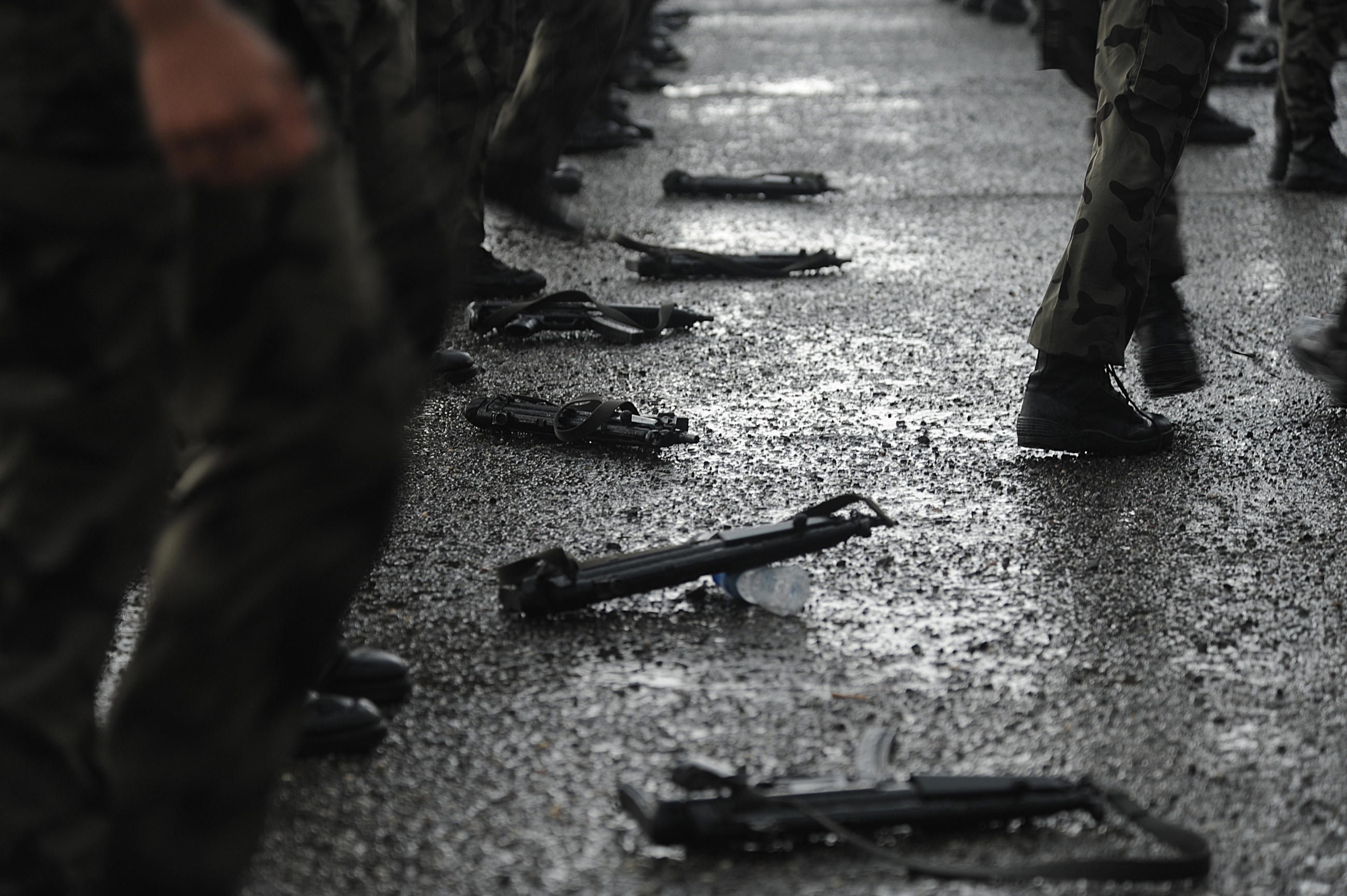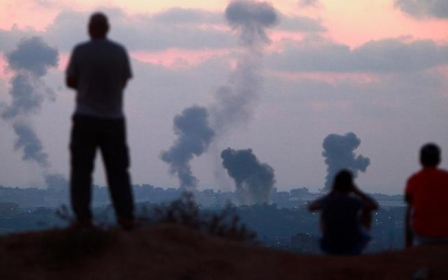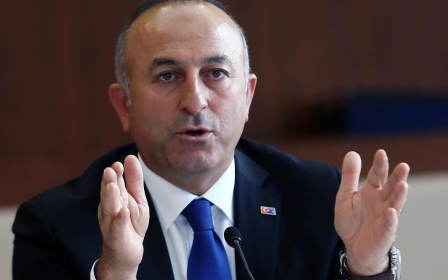Canada rejects treaty to control global arms trade

MONTREAL, Canada – Governments, human rights groups, and other observers have been left surprised over Canada's decision not to sign an international treaty aimed at regulating the global arms trade.
Entering into force on 24 December, the UN Arms Trade Treaty seeks to control the exchange of a variety of weapons, from tanks and armoured vehicles to missiles and small arms, and establishes national regulatory systems for states to track such transfers.
“This marks the opening of a new chapter in our collective efforts to bring responsibility, accountability and transparency to the global arms trade,” UN Secretary General Ban Ki-Moon said in a statement in December.
The treaty also stipulates that countries must evaluate whether a weapons transfer “would contribute to or undermine peace and security”, or could be used in violations of human rights and humanitarian law.
“One of the obligations is actually for the exporting country to follow their weapons transfers from cradle to grave, to track them all the way through,” explained Susan Waltz, professor of public policy at the University of Michigan, and an expert on the arms trade treaty.
To date, 130 countries are signatories to the treaty, while 61 have ratified it.
Though Canada supported a UN General Assembly resolution on the issue in April 2013, Ottawa has not signed the treaty, joining other non-signatories Russia, China, Syria and North Korea.
The world’s biggest arms traders were among some of the first countries to ratify the agreement – including France, Germany, the United Kingdom and Spain – while the US, for its part, has signed, but not ratified, it.
“We need global rules, and individual countries saying, ‘My system is great, we don’t need anything more’, is basically very fallacious because laws of one kind or another have been used to create giant loopholes that have allowed traffickers and others to basically escape justice,” Waltz told Middle East Eye.
Domestic politics at play
Canada has argued that it doesn’t need to sign the treaty because its existing controls on arms exports are already strong.
“Signing the Arms Trade Treaty would not have improved upon how Canada assesses exports of military items. Canada already has some of the strongest export controls in the world,” François Lasalle, spokesperson for Canada’s ministry of foreign affairs and international trade, told MEE via e-mail.
Lasalle said the government had concerns the treaty would affect “lawful and responsible firearms owners” in Canada, and that it was consulting with stakeholders and experts to verify the potential consequences.
“We remain committed to making a decision on whether to join the Treaty if it is determined that doing so is good for Canada, and for Canadians,” he said.
But human rights groups have adamantly rejected these arguments.
“This treaty does not at all speak to a Canadian duck hunter, or hunter, or farmer, about the shotguns or other weapons that they may own,” said Alex Neve, secretary general of Amnesty International Canada.
“If those duck hunters or farmers want to transfer their shotguns to President [Bashar al-] Assad in Syria, then yes, [they] would have a lot to say, and rightly so. But this treaty has nothing to do with domestic gun ownership.”
Neve told MEE he believed the government’s hesitance to sign the treaty was largely political, as Canada prepares to head into a federal election in 2015.
“There is an apprehension or a misunderstanding out there that somehow this treaty has to do with domestic arms control… rather than take some leadership and dispel that misunderstanding, the government seems willing to take advantage of that misunderstanding and score some political points.”
Middle East arms deals
Others have pointed to Canada’s multi-billion-dollar arms deals with states that are infamous for their poor human rights records as the main reason Ottawa is reluctant to put international controls on its weapons exports.
The treaty would also put stricter controls on how Canadian exports to the US are used. For decades, Canada’s largest trading partner for weaponry has been its southern neighbour, with Canadian weapons shipments averaging $190 million annually over the last decade. These exports fall under the bilateral Defence Development Sharing Agreement (DDSA), and are not included in Canada’s military export statistics.
“The arms trade treaty would continue to hold Canada responsible… if it sends [weapons] parts to the US that are incorporated to bigger weapons, and then sent and used irresponsibly,” said Waltz.
But in 2014, Canadian media reported the government had helped a Canadian company sign a $10 billion deal to ship armoured vehicles to Saudi Arabia.
According to Project Ploughshares, a Canadian anti-war group, the Canadian Commercial Corporation, a crown corporation, helped secure two export contracts for Ontario-based General Dynamics Land Systems Canada, worth $14.8 billion.
“One of the issues here is transparency. We know that the Saudi government is extremely opaque, and it’s very hard to get information about what equipment is being used where,” explained Kenneth Epps, senior programme officer at Project Ploughshares.
The government says Canada “strives to ensure that Canadian military exports are not prejudicial to peace, security or stability in any region of the world or within any country”.
But Epps told MEE that in the past, the Saudi national guard received most of the armoured vehicles being shipped from Canada; Tasked with protecting the Saudi royal family and other high-ranking officials, the national guard would be involved in squashing potential public protests in the kingdom, if and when they occur.
Human Rights Watch has documented myriad human rights violations committed by the Saudi regime, including the use of unfair trials and arbitrary detention to silence dissidents, a consistent violation of women’s rights, and the abuse of migrant workers, among others.
“The concern has to be that there is a high risk that these vehicles would be used against people who oppose, basically, a corrupt regime,” Epps said.
‘When weapons get into the wrong hands’
According to the Stockholm International Peace Research Institute, which studies arms control, disarmament and conflict, Canada was the 15th largest arms exporter in the world between 2009-2013, behind the US, Russia, China, and European Union countries like France, Germany and the United Kingdom.
But in recent years, Ottawa has increased its weapons exports to non-traditional trading partners. In 2013, the Canadian Press reported that Bahrain, Algeria and Iraq were new recipients of Canadian-made weapons, including guns and ammunition, and that these exports marked an increase of 100 percent from 2011-2012.
Bahrain has conducted a violent crackdown on pro-democracy protesters since 2011, the regime of long-standing President Abdelaziz Bouteflika in Algeria does not tolerate dissent, while Iraq remains ravaged by deadly sectarian violence.
In November last year, Ottawa-based Embassy newspaper reported that Canada was holding consultations to add Israel and the United Arab Emirates to its list of countries eligible to receive Canadian small firearms, as described under the Automatic Firearms Country Control List.
That list, Embassy reported, “has grown from an initial roster of 10 Canadian allies to a 37-member list that includes all NATO members, as well as a handful of countries that have been criticised for alleged human rights abuses”.
According to Epps at Project Ploughshares, Canada needs to be mindful of where its weapons are going, especially when it comes to the Middle East, “an extremely well-armed region”.
“We’ve seen… what happens when a well-armed government turns on its own people, in the case of Syria, or where equipment becomes available to rebel groups, as in Libya, [and] what can happen when weapons get into the wrong hands,” he said.
“This is another big risk that Canada needs to take into account when it sends an unprecedented amount of Canadian equipment to the Saudi government.”
Middle East Eye propose une couverture et une analyse indépendantes et incomparables du Moyen-Orient, de l’Afrique du Nord et d’autres régions du monde. Pour en savoir plus sur la reprise de ce contenu et les frais qui s’appliquent, veuillez remplir ce formulaire [en anglais]. Pour en savoir plus sur MEE, cliquez ici [en anglais].




